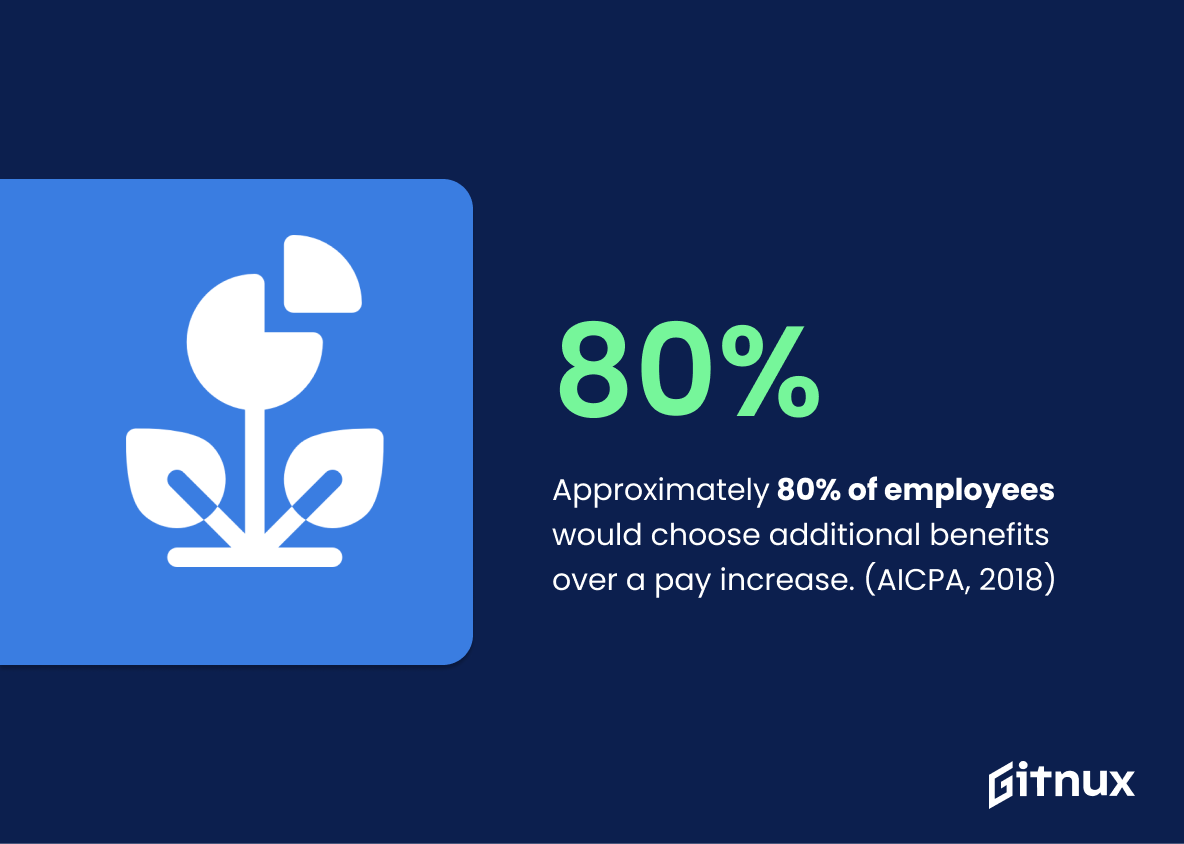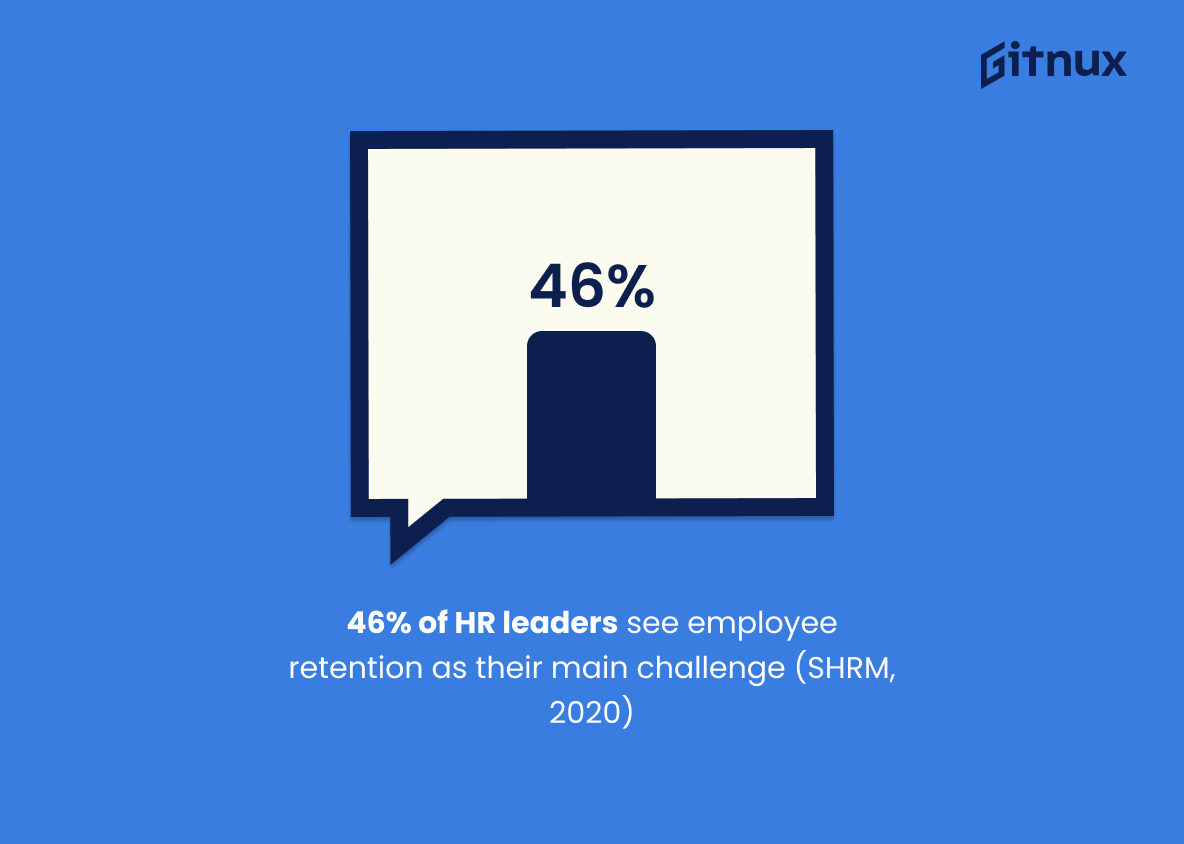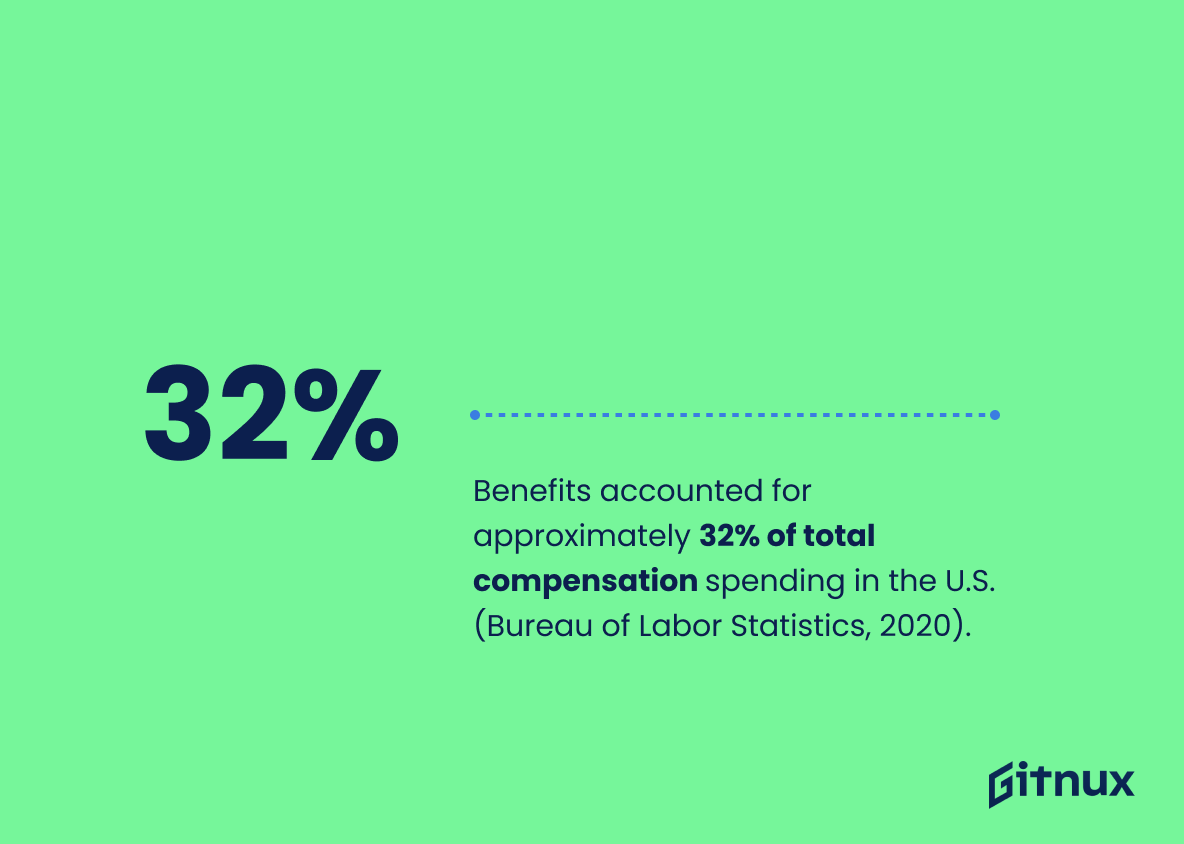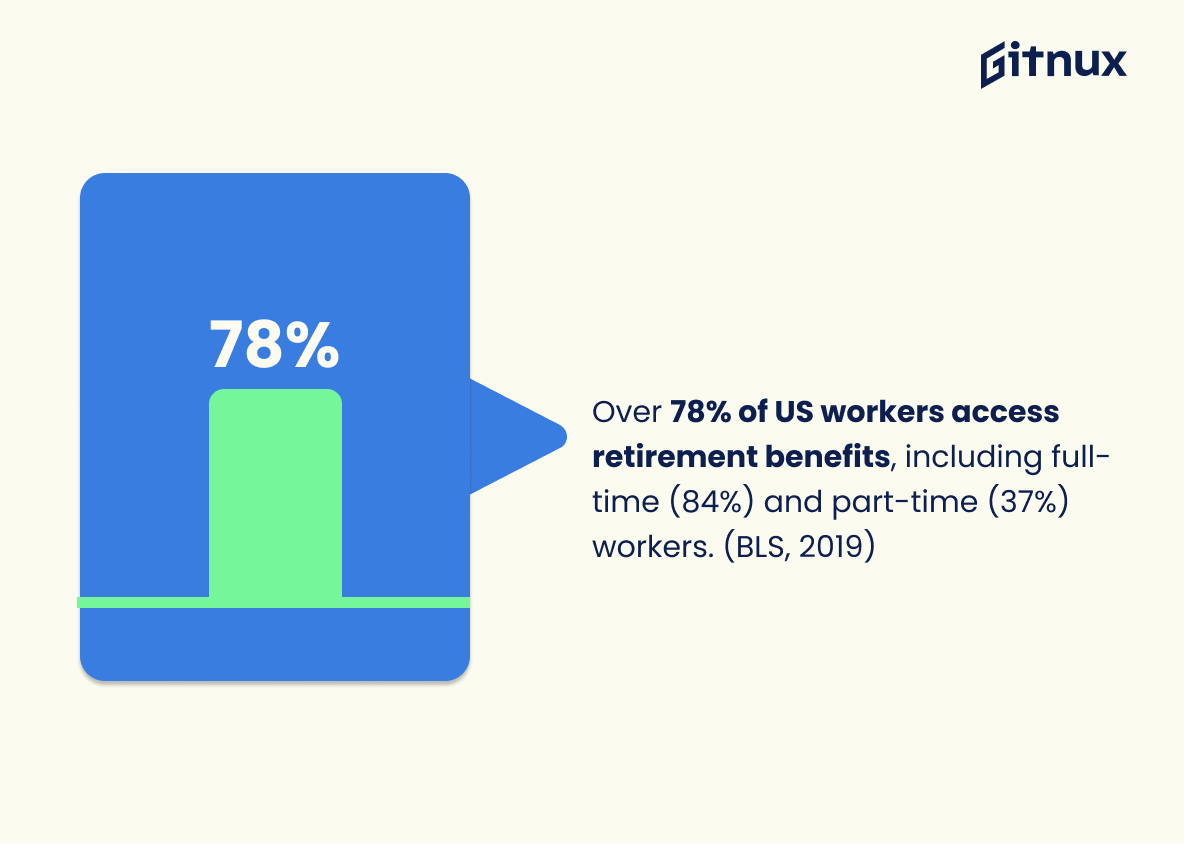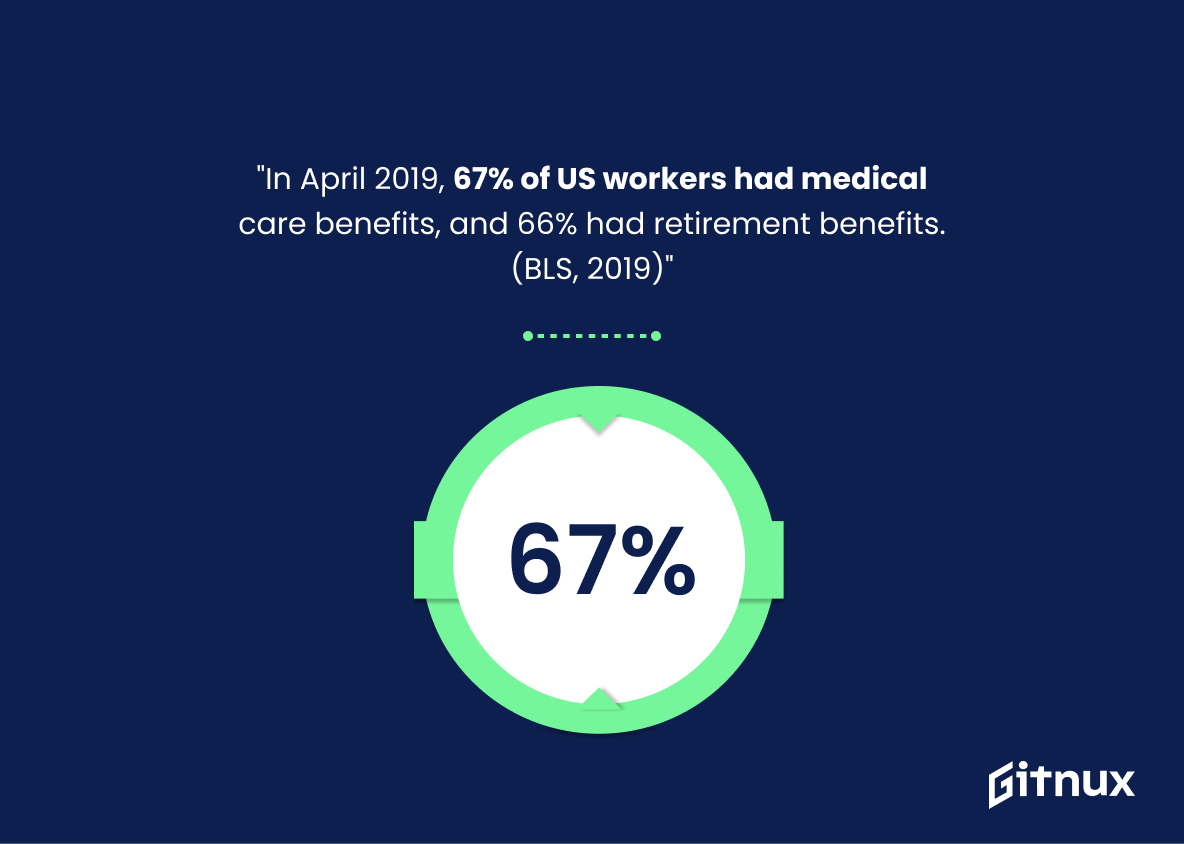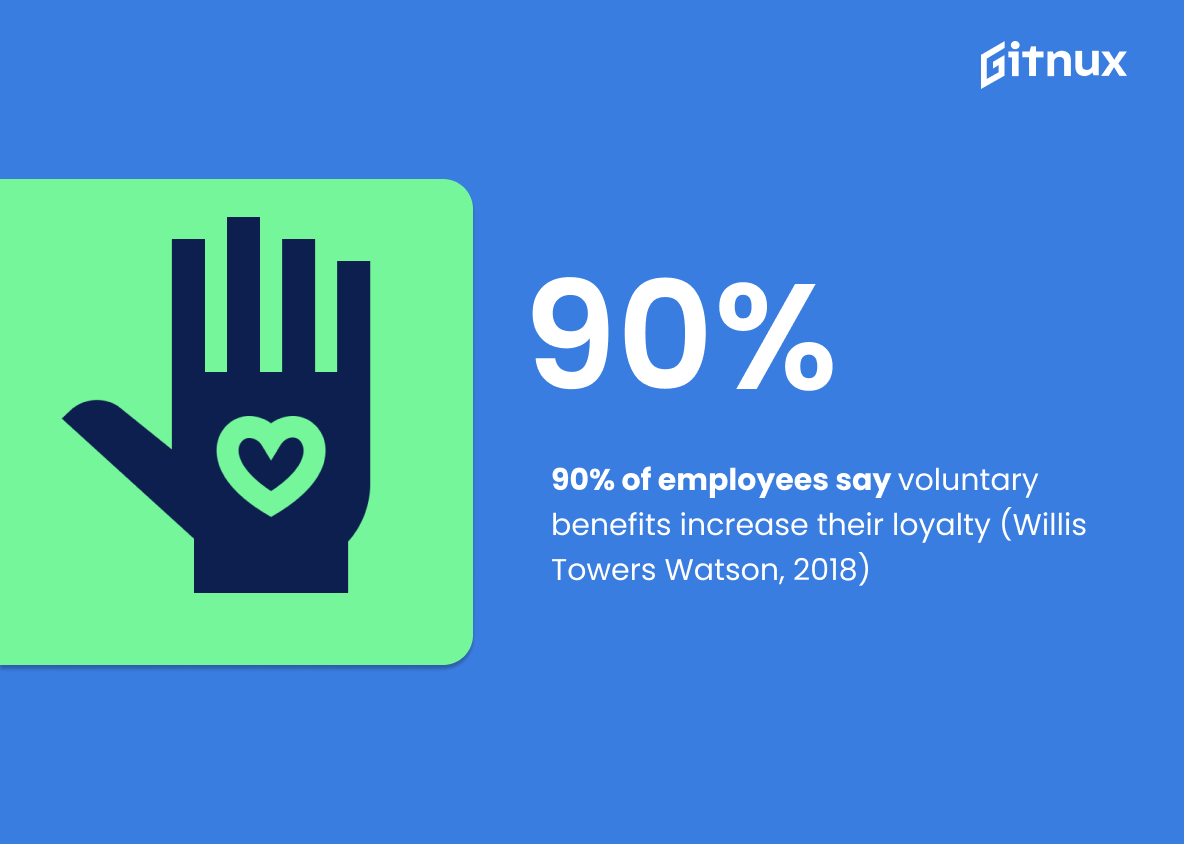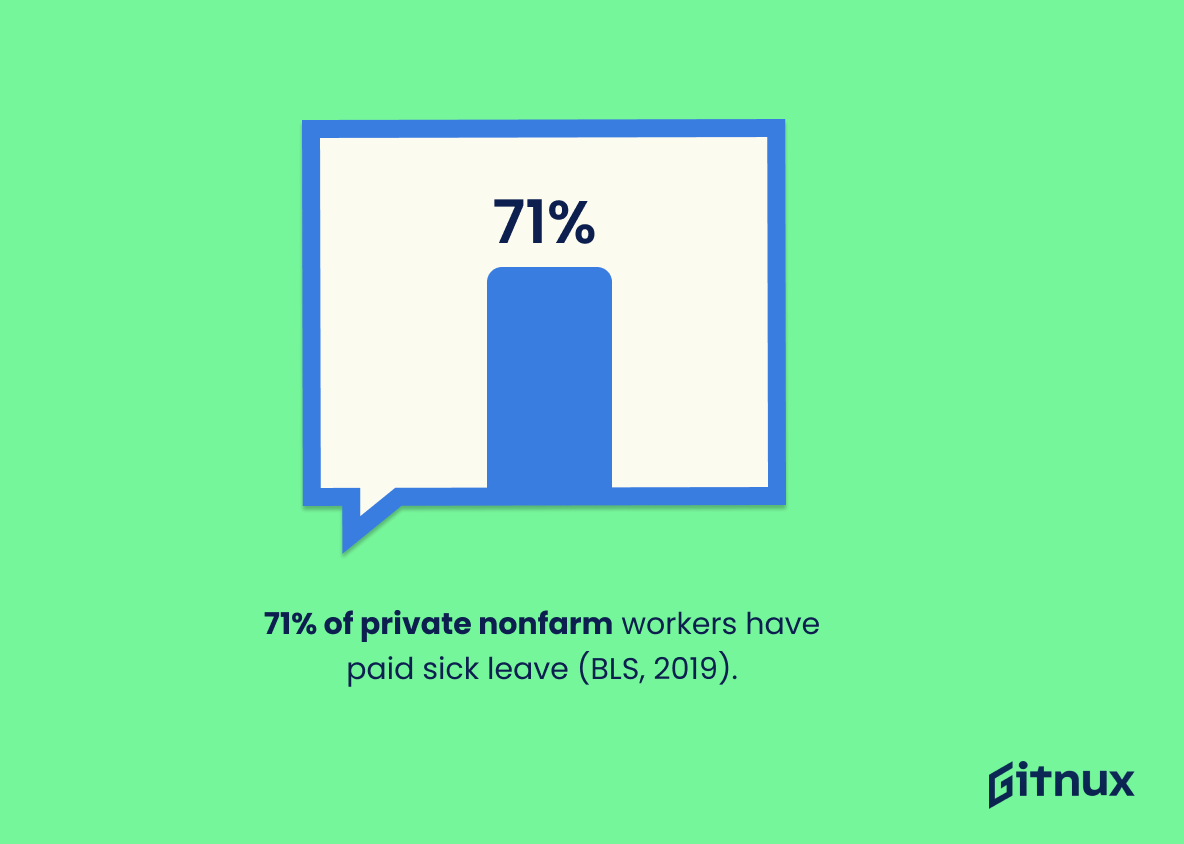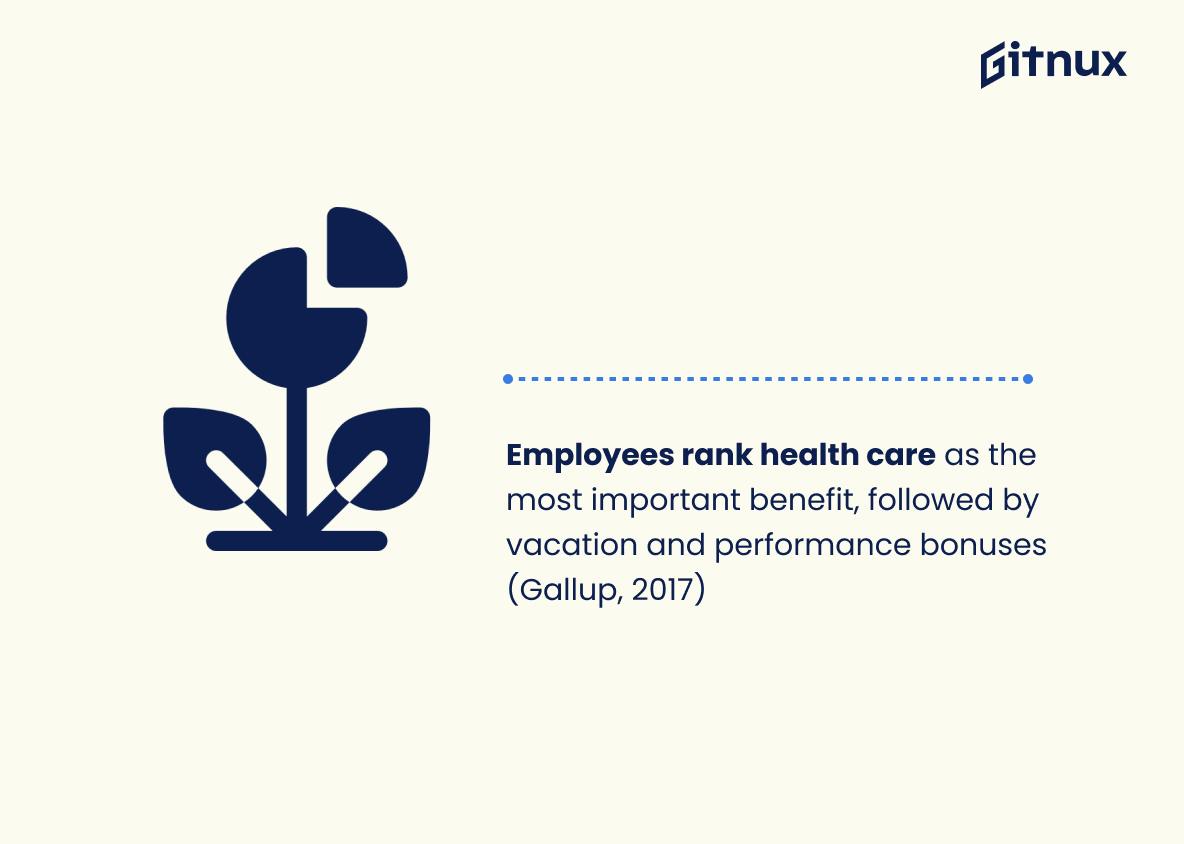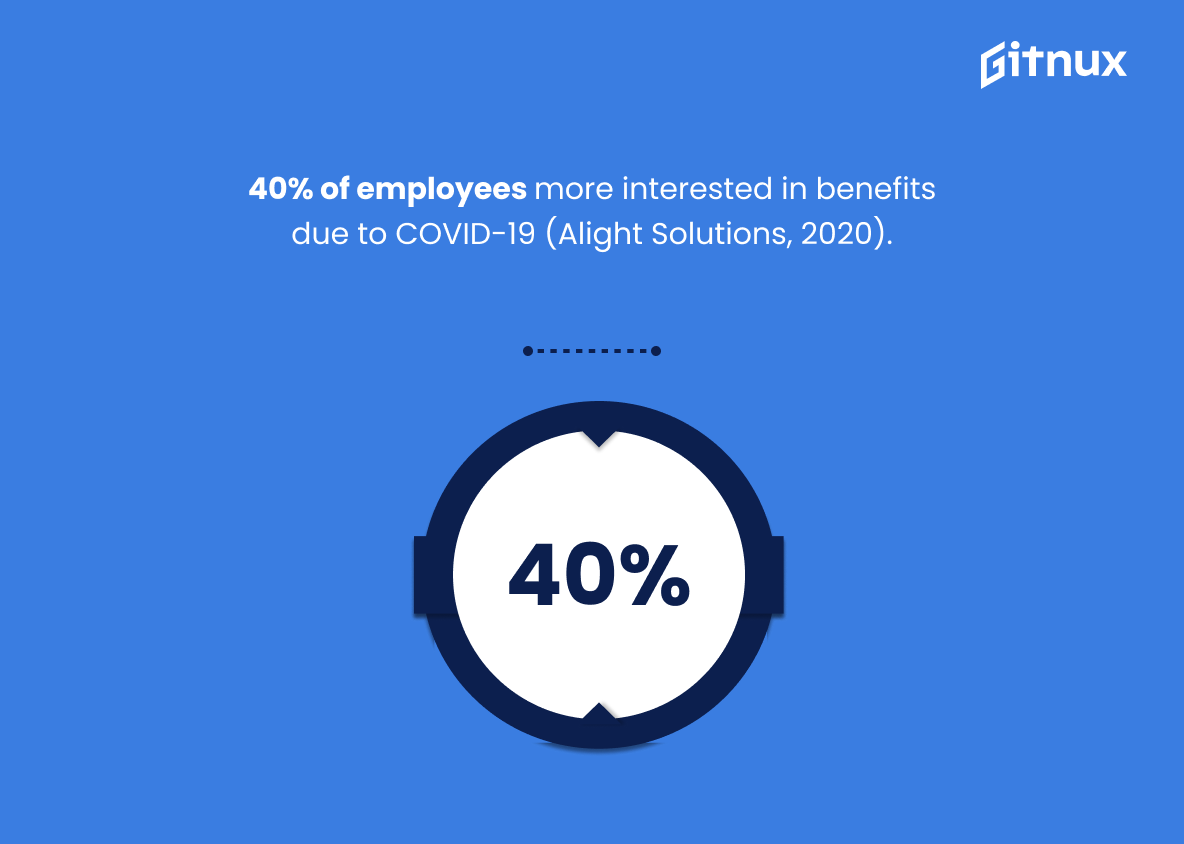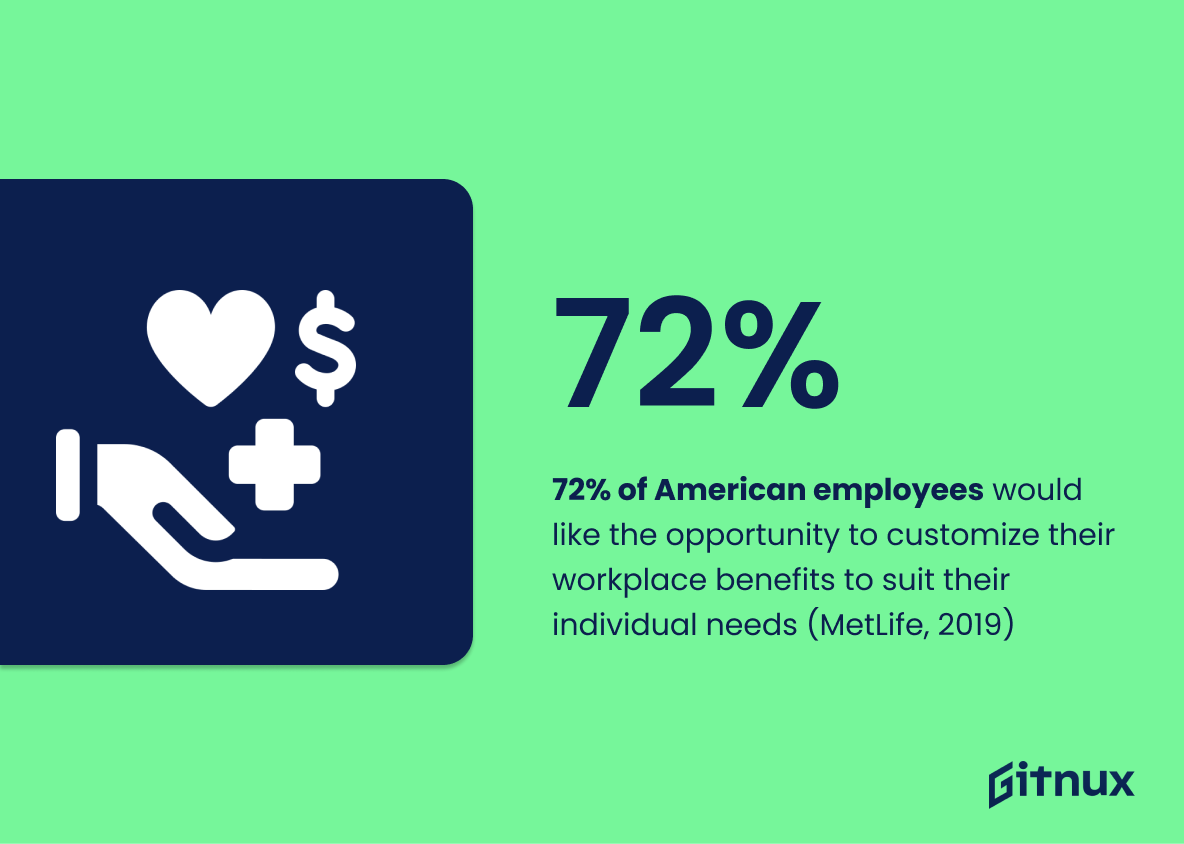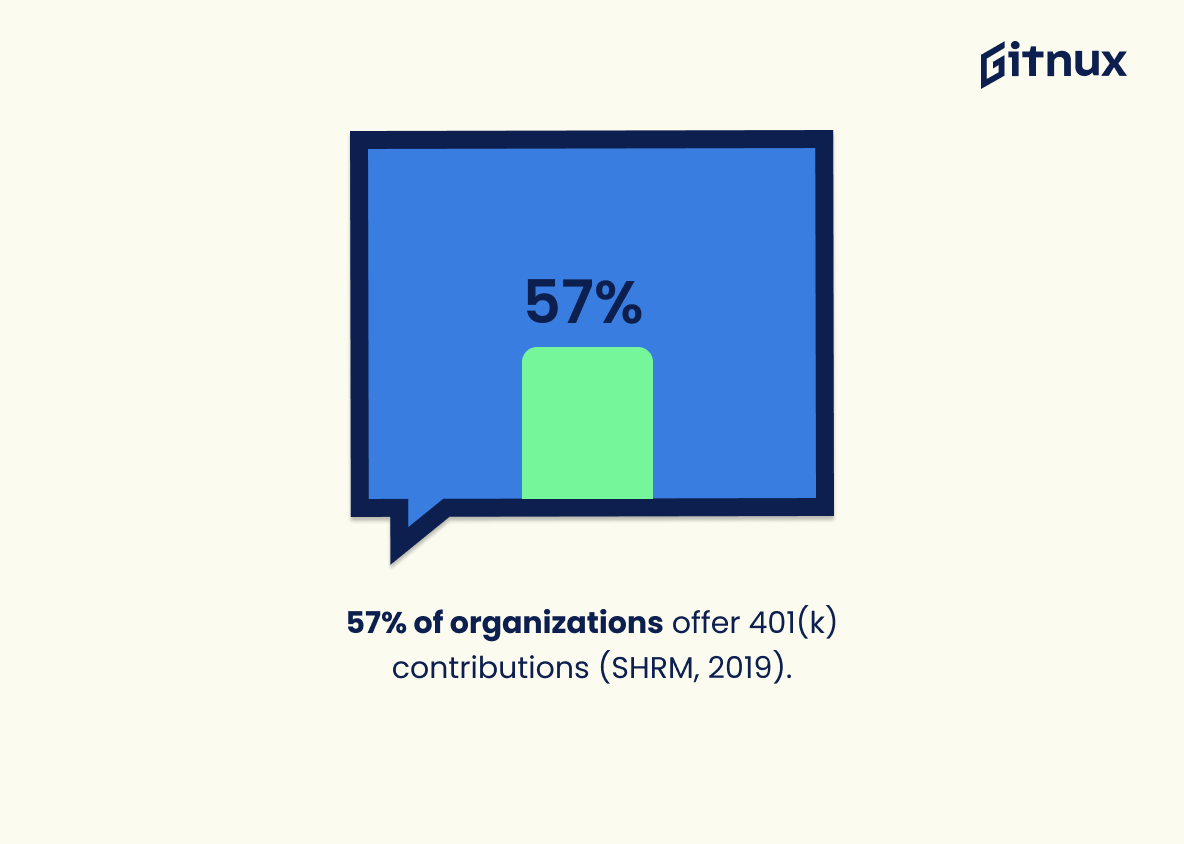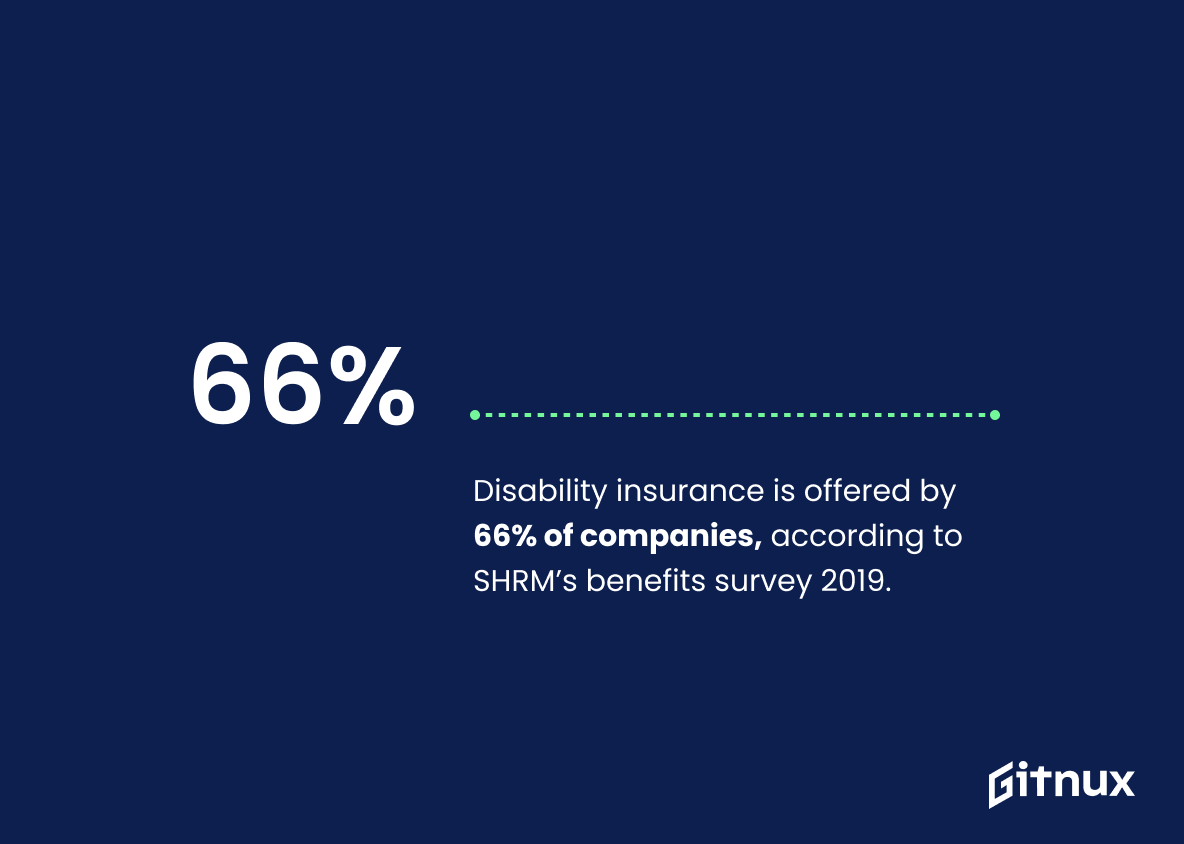As we navigate the evolving landscapes of jobs and careers, there’s no denying the critical role employee benefits play in the overall structure and success of an organization. Benefits influence job satisfaction, productivity, and loyalty among employees, and certainly, their decision to stay with a given company. In this blog post, we delve deep into the intriguing world of employee benefits, drawing insights from key industry statistics to investigate trends, changes, and implications for both businesses and employees. By the end of this read, you’ll have a clearer, fact-based perspective of the employee benefits’ landscape and a better understanding of its role in shaping today’s competitive business environment. Buckle up, and let’s explore this fascinating world.
The Latest Employee Benefits Industry Statistics Unveiled
Approximately 80% of employees would choose additional benefits over a pay increase. (AICPA, 2018)
In the unending labyrinth of the employee benefits industry, the statistic revealing that around 80% of employees prefer additional benefits over a pay increase stands as a striking beacon of insight. In the swirling maelstrom of incremental salaries, this statistic, cited by AICPA in 2018, is a groundbreaking reminder of how individuals value life beyond the numerical totems printed on their paychecks.
For a blog post delving into the realm of employee benefit industry statistics, this nugget of wisdom opens up vast new plains of understanding. It paints a scenario where, contrary to conventional beliefs, employees gaze beyond pure financial gains as they journey through the landscape of employment compensation. This enlightening information could pave the road to innovative HR strategies, sculpting benefit packages that resonate with employee’s desires and aspirations, thus fostering a harmonious, engaged and highly productive workforce.
It certainly adds heart to the numbers, illustrating how the spectrum of employee satisfaction is colored by more than just economic rewards. Finally, it illuminates possible trails for the industry’s evolution, urging a pivot towards benefit-laden rewards systems that fulfil the work-life balance and holistic well-being of the modern worker. Indeed, understanding this statistic is like discovering a compass directing us to a future where more employees find happiness in a richer blend of work benefits, rather than relying solely on a higher paycheck.
46% of HR leaders consider employee retention and turnover to be their top workforce management challenge (SHRM, 2020)
Delving into the heart of the Employee Benefits Industry, it’s imperative to note the striking relevance of a certain statistic. Spotlighting a research revelation from SHRM in 2020, we discover that a significant 46% of HR leaders identify employee retention and turnover as their paramount workforce management hurdle. This statistic underscores the substantial role that employee benefits play in the retention strategy.
Undeniably, attracting top-notch talent is one facet of the picture but keeping that talent engaged, motivated and, most importantly, ‘on board’ is a different ballgame altogether. Moreover, in the competitive landscape of the employment market, potential employees not only eye the compensation package but also weigh the benefits and perks that companies put on the table.
In essence, this statistic elevates a pivotal discussion for the blog post which is defining or re-defining the employee benefits strategy. Industry stewards cannot afford to overlook this statistic, as it’s essentially a beacon guiding the path towards crafting an optimal benefits package. This package will not only fuel employee satisfaction but also fortify their commitment to the organization, subsequently curtailing turnover and bolstering retention.
Benefits accounted for approximately 32% of total compensation spending in the U.S. (Bureau of Labor Statistics, 2020).
Framing this statistical revelation into perspective, it offers a keystroke into the heartbeat of the Employee Benefits Industry. The Bureau of Labor Statistics reported in 2020 that about 32% of total compensation funding in the U.S was steered towards benefits. This is quite a revealing figure that paints a picture of a business environment where nearly a third of all compensation expenses are channeled to employee benefits. It anchors a crucial aspect in understanding the financial weight employee benefits carry in a typical U.S enterprise’s fiscal plan. More so, it underlines a shift in priorities in the workplace- offering a glimpse into the substantial value employers are attributing to employee welfare. In the grand scheme of things, these observations become instrumental in discerning trends, patterns and future predictions within the Employee Benefits Industry.
More than 78% of all US workers have access to retirement benefits – including 84% of full-time workers and 37% of part-time workers. (Bureau of Labor Statistics, 2019)
“Lift the veil off this remarkable statistic – over 78% of all U.S. workers possess access to retirement benefits. Intriguingly, this includes a staggering 84% of full-time workers in comparison to 37% of part-time workers (Bureau of Labor Statistics, 2019). The luster of this figure truly shines when we delve into the context of Employee Benefits Industry Statistics.
Firstly, it endorses the perpetual growth of the employee benefits industry, visibly indicating that businesses large and small are strategically investing in providing retirement benefits. The disparity between full-time and part-time workers also illuminates the depth of the industry’s segmentation, which in turn, reveals opportunities for fostering more inclusive, wide-ranging benefit solutions.
More so, these percentages harness the power to shape policy, influence corporate decisions and potentially drive industry trends. They shed light on societal structures and employment practices, presenting a picture of the workers’ world beyond mere numbers. Therefore, this notable statistic not only serves as a lens to view the current landscape but also as a compass pointing towards future industry evolutions.”
As of April 2019, 67% of all US workers have access to medical care benefits, and 66% to retirement benefits. (Bureau of Labor Statistics, 2019)
Peeling back the layers of the Employee Benefits Industry, one of the captivating strides is the noteworthy percentage of American workers stepping into healthcare and retirement territories. According to 2019 data from the Bureau of Labor Statistics, a considerable 67% of all US workers are tucked under the comforting umbrella of medical care benefits, with a strikingly close 66% catered to in retirement benefits. This not only signifies the industry’s footprint in backing US workers but also underscores the importance that organizations place on ensuring the welfare of their employees, the lifeblood of their operations. A vital microcosm, these figures offer a glimpse into the evolving landscape of employee benefit programs and its potential trajectory.
90% of employees say voluntary benefits increase their loyalty (Willis Towers Watson, 2018)
Plunging into the heart of the Employee Benefits Industry, there’s a standout statistic that cannot be ignored – a robust 90% of employees testify that voluntary benefits bolster their loyalty. This is according to a study by Willis Towers Watson in 2018. This resonates strongly with the theme of our blog post.
These numbers do more than just catch attention – they illuminate the potential power of voluntary benefits as a strategic tool for fostering employee allegiance. Voluntary benefits, as such, are not just ‘nice-to-haves.’ Instead, they function as pivotal instruments that could tip the scales when it comes to employee retention and business resilience.
In a world where talent retention is of primary concern, this palpable link between voluntary benefits and employee loyalty underlines the importance of businesses reconfiguring their benefits approach. Offering appealing voluntary benefits could be the silver bullet they need to keep their employees engaged, satisfied, and, most importantly, loyal. Consequently, this statistic underscores the significance of voluntary benefits as a cornerstone of an effective employee benefits strategy.
Paid sick leave is available to 71% of workers on private nonfarm payrolls, according to a national compensation survey (Bureau of Labor Statistics, 2019)
Diving into the landscape of Employee Benefits Industry Statistics, let’s shine a spotlight on a particularly relevant nugget of information. A national compensation reveal from the esteemed Bureau of Labor Statistics presents us with a noteworthy fact – paid sick leave is a reality for 71% of workers on private nonfarm payrolls. This figure, more than a simple number, serves as an important marker in understanding the existing provisions in the industry. It underscores the widespread acknowledgment of paid sick leave as a key component of employee benefits. Further, this statistic also equips us to evaluate the progress made thus far and envision the trajectory for future policy amendments. A call to action for the remaining 29%, this statistic also nudges policy makers and businesses into re-evaluating the current benefit schemes while simultaneously enhancing their appeal to prospective employees.
Employees rank health care as the most important benefit, followed by vacation and performance bonuses (Gallup, 2017)
Plunging into the heart of the Employee Benefits Industry, the insight drawn from the 2017 Gallup survey sends a powerful pulse. It unveils health care as the zenith of employee priorities, followed by vacation and performance bonuses. Such a revelation paints a vibrant picture of the current worker mindset, grounding us in the reality that benefits are not just frilly extras, but core to job satisfaction and employee retention. Consequently, this data-driven finding should both challenge and guide employers and the industry as a whole to not just see, but also act upon the benefit preferences of their workforce. It’s a compass, steadily pointing towards enriched employee satisfaction and heightened company success.
56% of U.S. adults with employer-sponsored health benefits said that whether or not they like their health coverage is a key factor in deciding to stay at their current job (Kaiser Family Foundation, 2018)
Extrapolating from this compelling statistic, it illustrates a powerful intersection between healthcare and employment decisions for over half of American adults with employer-sponsored health benefits. In the dynamic landscape of the Employee Benefits Industry, these insights underscore the critical weight healthcare carries in job retention strategies. Hence, employers seeking to fortify their talent pool must not just offer health benefits, but strive for plans that resonate with their employee’s needs and preferences. This statistic sets the stage for a comprehensive discourse on strategically utilizing health benefits as an effective tool for employee retention and satisfaction, a conversation that holds paramount significance in the arena of Employee Benefits Industry Statistics.
40% of employees expressed a greater interest in understanding and leveraging their benefits because of the COVID-19 pandemic (Alight Solutions, 2020)
This captivating figure speaks volumes about the evolving consciousness of employees towards their benefits, particularly in the wake of the COVID-19 pandemic. The significant upswing in interest—a striking 40%—stands as a beacon of the increasing importance and recognition of employee benefits within the industry. What’s fascinating is that this shift was catalyzed by a world event such as the pandemic, nudging individuals to actively seek to comprehend and utilize their benefits. It puts in perspective the potential for external factors to influence employee perception and ultimately shape industry trends in the field of employee benefits. Therefore, for anyone navigating the employment or HR landscape, immersing oneself in such enriching insights can be the compass to guide decision-making strategies and policies, or simply fuel an enlightening conversation around the subject matter.
72% of American employees would like the opportunity to customize their workplace benefits to suit their individual needs (MetLife, 2019)
Painting a vivid picture of the landscape of American work culture, this statistic uncovers a recurring theme that has been elaborately woven into the fabric of the employee benefits industry. With 72% of American workers yearning for personalized workplace benefits, the industry is experiencing a fundamental shift towards customization and individuality. In the context of the employee benefits sector, this figure serves as a beacon, guiding employers and companies to pivot their benefits strategies. Traditional, one-size-fits-all benefits packages are clearly falling out of favor, making way for a new era that pledges to honor the unique needs and circumstances of each employee. This perspective not only changes how benefits are perceived, but also how they are designed and executed, propelling the industry into uncharted territories of inclusivity and connection.
More than half (57%) of organizations offer paycheck contributions to a 401(k) savings and thrift plan according to SHRM’s 2019 Employee Benefits Survey.
The revelation that over half (57%) of organizations provide paycheck contributions to a 401(k) savings and thrift plan, as illuminated by SHRM’s 2019 Employee Benefits Survey, paints an expansive picture when delving into the anatomy of Employee Benefits Industry Statistics. It is akin to a spotlight on a stage, capturing the attention because it demonstrates a significant trend in the benefits model of organizations – promising a landscape where financial security in the form of retirement savings is increasingly becoming a standard.
This delightful nugget offers a significant insight into the employers’ shifting gear towards providing financial wellness for their employees. It’s like adding a splash of color to a black and white photograph of the corporate benefits structure, revealing significant attention towards when employees cross over the retirement threshold. This figure, therefore, creates a pivotal premise for understanding and benchmarking industry standards in the Employee Benefits world.
In other words, this statistic is a key-player, an exhibit in the ‘museum’ of Employee Benefits Industry statistics. Just as a museum-goer would use an exhibit to gain understanding, so too this percentage helps to comprehend just how dedicated organizations are towards nourishing their employees’ long-term financial stability.
Disability insurance is offered by 66% of companies, according to SHRM’s benefits survey 2019.
The statistic highlighting that 66% of companies offer disability insurance, as revealed by SHRM’s benefits survey 2019, brings a powerful resonance to our discussion on employee benefits industry statistics. It illuminates the prevailing trend in the benefits industry where more than two-thirds of organizations prioritize their employees’ health and wellness in the event of any unforeseen circumstances, serving as a compelling testament to the fact that companies are truly beginning to understand and address the breadth and depth of their employees’ needs. This demonstrative shift illustrates the changing dynamics of conventional benefits provision, bringing attention to the important role of disability coverage in an inclusive benefits package.
73% of U.S. private industry workers have access to paid vacations (Bureau of Labor Statistics, 2019)
Highlighting employee benefits trends, our focus shifts to the revelation pulled straight from the 2019 Bureau of Labor Statistics report; a commendable 73% of U.S. private industry workers enjoy the privilege of paid vacations. This nugget of data slingshots to the forefront not just as a mere number but as an industry standard, setting a riveting narrative of industry expectations. It not only showcases current employer competitiveness in the benefits landscape but also helps us gauge the importance placed on work-life balance and overall employee well-being. A deep-dive into these statistics paints a compelling picture of the industry valuation, trending work ethics, and the evolving parameters that discern a job’s attractiveness.
Biggest challenges in managing benefits cost for employers are the increasing cost of health care (85%) and compliance complexity (44%) (Arthur J. Gallagher & Co, 2020)
In this rapidly-evolving world of employee benefits, managing costs has become a high-wire act for employers. It’s no wonder that as we dissect the data from Arthur J. Gallagher & Co 2020, we unearth that a whopping 85% of employers perceive the increasing cost of health care as the greatest challenge they face. Teetering not too far behind, with 44% of employers, lies the labyrinth of compliance complexity. These revelations paint a fascinating yet challenging landscape of the industry, amplifying the emphasis on innovative, cost-effective benefits solutions, and a deeper understanding of legal compliance. This statistic is vital to comprehend the deep-seated challenges the industry grapples with and critical in shaping upcoming trends and solutions within the employee benefits terrain.
Over 60% of organizations offer telemedicine benefits to their employees (SHRM, 2019)
In the ever-evolving landscape of employee benefits, the incorporation of telemedicine benefits represents a significant trend in the industry spotlighted by the statistic that over 60% of organizations have joined this bandwagon. This datum, courtesy of SHRM 2019, exemplifies how businesses are racing to adapt to tech-driven healthcare solutions. It demonstrates a progressive shift towards non-traditional benefits, illustrating that companies are increasingly recognizing the value of providing their employees with convenient and innovative healthcare options. Clearly, this evolutionary trajectory casts a spotlight on telemedicine as a powerful tool in the competitive arena of employee benefits. It’s not surprising as access to remote health consultations can boost both employee wellness and job satisfaction, ultimately cumulating in higher productivity levels. Hence, in a blog post about Employee Benefits Industry Statistics, this piece of information is a testament to modern businesses recalibrating their employee benefits strategies with emerging technologies and needs.
Among full-time, private industry workers, 96% have access to medical care benefits, and 94% have access to retirement benefits (Bureau of Labor Statistics, 2019)
Laying a spotlight on the statistic narrating that 96% of full-time, private industry workers have access to medical care benefits, while 94% have access to retirement benefits, unveils the dynamic landscape of the employee benefits industry. It’s an intriguing testament to the prioritization of health and future security in the benefits schema. By leveraging these figures, businesses can discern the common threads in employee benefits packages, thereby curating competitive offerings that resonate with current industry trends. Moreover, these figures provide a comparative benchmark for organizations to evaluate their benefits packages, enabling them to broker employee satisfaction and retention more effectively. Ultimately, such data yields a more transparent, robust portrait of the employee benefits landscape in the private industry, guiding both employers and employees alike.
53% of companies in a survey plan to redesign their health and benefits program to differentiate their employee value proposition (Willis Towers Watson, 2018)
Peering into the intriguing realm of Employee Benefits Industry Statistics, it’s impossible not to notice the buzz around a potent figure: 53% of companies surveyed by Willis Towers Watson in 2018 have set their sights on revamping health and benefits programs to enhance their employee value proposition. This captivating piece of data serves as a dynamic roadmap for the terrain ahead, underlining not only an emergent trend but illustrating the strategic maneuvers businesses are willing to undertake to stand out in the marketplace.
With slightly more than half of businesses on board, this statistic showcases a compelling shift towards operational transformation and employee-centric focus. By rebooting health-related perks, companies are demonstrably willing to go the extra mile, investing in strategies to differentiate their value proposition. This figure illuminates the high stakes in the industry-wide race to attract, engage, and retain top-tier talent, shaping the very fabric of modern working life.
So it’s clear, this isn’t a passing trend. Rather, it’s an enlightened approach to corporate benefit frameworks being etched into the industry playing field – a far-reaching change rooted in the burgeoning recognition that employees are a vital cornerstone to any successful organization. This statistic begins to demystify the often convoluted landscape of the Employee Benefits Industry and serves as a beacon for anyone looking to comprehend the evolving dynamics of this sector.
Almost 1 in 4 workers (23%) report having quit a past job over the lack of employee benefits (Indeed, 2020)
Unveiling the significance of the stated statistic, we delve into the profound impact it has on the world of employee benefits. It undeniably highlights the crucial role that a comprehensive benefits plan plays in employee retention. A staggering 23% of the workforce, according to Indeed’s 2020 survey, have opted to hang up their boots at their past job over the absence of apt employee benefits. This information acts as a catalyst for businesses in the Employee Benefits Industry, shaping their strategies focusing on the value and necessity of a well-rounded employee benefits portfolio. The statistic essentially sends out a clarion call to this industry, nudging it not just to design benefits as mere legalese or optional add-ons, but as potentially powerful tools in enhancing employee job satisfaction, loyalty, and ultimately, retention.
Conclusion
Understanding the Employee Benefits Industry Statistics can serve as an invaluable tool for decision making in any organization. These statistics paint a clearer picture of the trends, challenges, and opportunities in this ever-evolving field. Companies that stay updated on these numbers will be more equipped to adapt, make strategic decisions, and ultimately, cultivate an environment that attracts and retains the best talent. Therefore, investing in comprehensive employee benefits isn’t just an act of goodwill – it’s a vital strategy for business growth and sustainability. Keep an eye on these trends, and let them guide your benefit policies to foster a happier and more productive workforce.
References
0. – https://www.alight.com
1. – https://www.www.kff.org
2. – https://www.news.gallup.com
3. – https://www.www.bls.gov
4. – https://www.www.willistowerswatson.com
5. – https://www.www.hiringlab.org
6. – https://www.www.metlife.com
7. – https://www.www.shrm.org
8. – https://www.www.ajg.com
9. – https://www.www.aicpa.org
